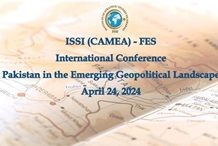What’s happening in Vietnam? The country appeared to be the most lucrative market for investors since the 1990s. Now, one may ask, is it Vietnam’s economic nationalism or economic discrimination that is revealing itself against China? East Asia has history of demonstrations against other nationalities. Demonstrations started against Japan in South East Asia in the 1950s. Lately, the Japanese were targeted in China. Now, 20,000 demonstrations in Vietnam targeted China, Taiwan, Hong Kong, and ethnic Chinese. Behind the scenes there were ‘government blessings.’ Is it an American pivot to Asia or the reaction against the rise of China and its proposed new maritime routes?
Protestors burned and looted factories. More than 20 people died and 128 were injured as anti-Chinese riots in Hanoi and Ho Chi Minh City escalated against Chinese factories and companies on 13 May. Chinese took shelter in hotels and halted operations in their factories. Over 3000 escaped to Cambodia.
Now, it seems China might repatriate its nationals from Vietnam. Beijing strongly protested against the riots. Chinese Foreign Minister Wang Yi stated that ‘Vietnam bears inescapable responsibility’ for the rioters’ attacks on Chinese firms and nationals. He demanded an investigation into the violence and compensation for the losses of Chinese firms and citizens.
Many factories were damaged in a southern province of Binh Duong notably a large Taiwanese steel mill. There are around 1,000 Taiwanese companies in Binh Duong and over 200 have been attacked, with 11 factories burned. Tension rose amidst anger over a Chinese oil rig placed in disputed waters near the Paracel Islands claimed by both Vietnam and China. Beijing deployed an oil rig worth US$ 1 billion in waters 130 km off the Exclusive Economic Zone (EEZ) as claimed by Vietnam. China believes that the drilling was within the range of China’s sovereignty, rights, and jurisdiction under the United Nations Convention on the Law of Sea (UNCLOS) of 1982. Vietnam also expressed its intention to take a legal course of action against China. The Chinese Foreign Ministry gave references to the UNCLOS too.
They opined that the Xisha Islands are part of China’s inherent territory but Vietnamese authorizes claim that Xisha and Nansha Islands belong to Vietnam. China might take some security measures for the drilling and its workers. The numbers of Vietnamese and Chinese vessels have increased around the disputed waters and might escalate in further political and military tension between the two nations.
Both countries fought several wars and remained unable to resolve disputes. They fought a border war in 1979. Ties were normalized in 1991. On the Spratly Islands, China has a maritime dispute with Taiwan, the Philippines, Malaysia, and Brunei besides Vietnam. A separate island disputes exists between China and Japan. Because of the forces of the free market and globalization, the situation is worsening.
China invested enormously in South East Asia. Vietnam became a favorite destination of Chinese investment. Taiwan is one also of the largest sources of foreign direct investment in Vietnam, having poured in US$28 billion over the past two decades. The Vietnam episode dented upon the soft image of China in South East Asia. Chinese investors also face public anger in the United States and Australia. China needs regional balance in its investment outflow policy. More investment could be carried out in a country that has extraordinarily good diplomatic relations with China. Myanmar and Pakistan are cases in point.
The rise of China also faces a dilemma. Japan and many East Asian countries oppose a Chinese presence. Disputes are historical and they put a limit on China’s emerging role. Trade and investment also have limitations for building trust. Diplomacy faces failure in spite of regional economic integration under various fora. ASEAN maintains a neutral stand over the issue.
Japan, Vietnam, and the Philippines are difficult spots for Chinese diplomacy in East Asia. China says that the United States and Japan have been instigating Vietnam for provocative action. There should be some regional mechanism to diffuse tension and resolve the territorial disputes around the South China Sea. In fact, the maritime dispute could easily be resolved under the UNCLOS.
Vietnam tried to muster international support. The country opted to take up the matter to the International Court of Justice. Japan, Australia, and the United States criticized China’s action in the South China Sea. On the other hand, riots have also damaged Vietnam’s soft image of a safe destination of investment and tourism. More than China, Vietnam would face difficulties. Vietnam’s trade with China rose to US $50.2 billion last year and amounts to 15 percent of Vietnam’s global trade. Riots have threatened foreign investment in Vietnam. Rising tension would severely damage the prospects of trade between the two nations. Vietnam should avoid its economic nationalism to fix its woes with China.
Views expressed are of the author and do not necessarily reflect the views of ISS or of the Government of Pakistan.












